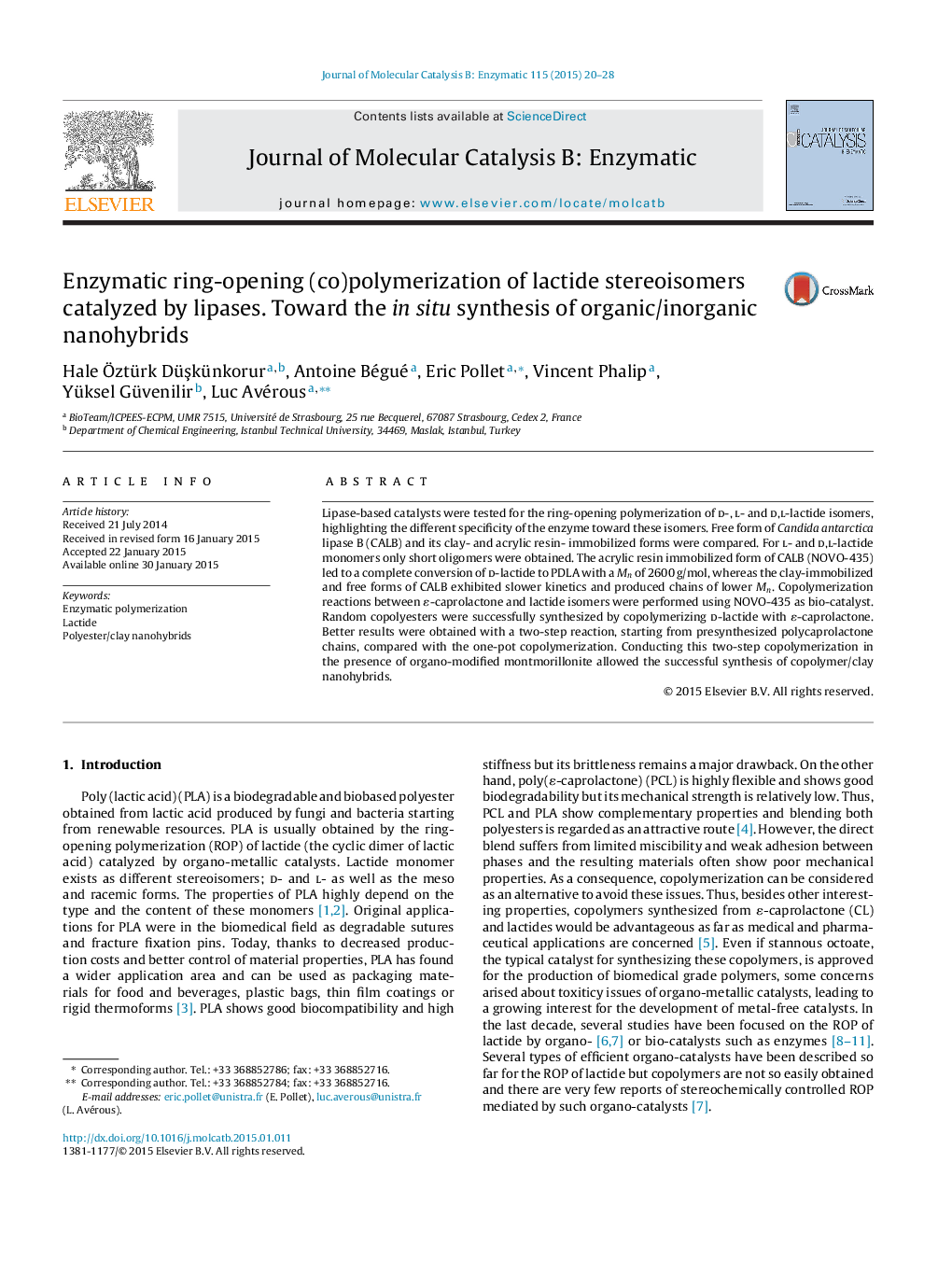| Article ID | Journal | Published Year | Pages | File Type |
|---|---|---|---|---|
| 69548 | Journal of Molecular Catalysis B: Enzymatic | 2015 | 9 Pages |
•Immobilized CALB leads to complete conversion of d-lactide into PDLA.•Only short oligomers were obtained for l- and d,l-lactide monomers.•Random copolyesters were successfully synthesized from ɛ-caprolactone and d-lactide.•A two-steps reaction starting from presynthesized PCL gives longer copolymer chains.•Copolymerization in presence of organoclay leads to organic/inorganic nanohybrids.
Lipase-based catalysts were tested for the ring-opening polymerization of d-, l- and d,l-lactide isomers, highlighting the different specificity of the enzyme toward these isomers. Free form of Candida antarctica lipase B (CALB) and its clay- and acrylic resin- immobilized forms were compared. For l- and d,l-lactide monomers only short oligomers were obtained. The acrylic resin immobilized form of CALB (NOVO-435) led to a complete conversion of d-lactide to PDLA with a Mn of 2600 g/mol, whereas the clay-immobilized and free forms of CALB exhibited slower kinetics and produced chains of lower Mn. Copolymerization reactions between ɛ-caprolactone and lactide isomers were performed using NOVO-435 as bio-catalyst. Random copolyesters were successfully synthesized by copolymerizing d-lactide with ɛ-caprolactone. Better results were obtained with a two-step reaction, starting from presynthesized polycaprolactone chains, compared with the one-pot copolymerization. Conducting this two-step copolymerization in the presence of organo-modified montmorillonite allowed the successful synthesis of copolymer/clay nanohybrids.
Graphical abstractFigure optionsDownload full-size imageDownload as PowerPoint slide
